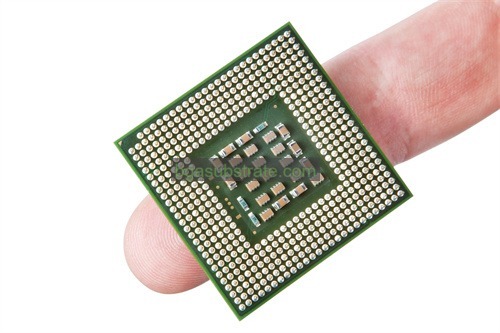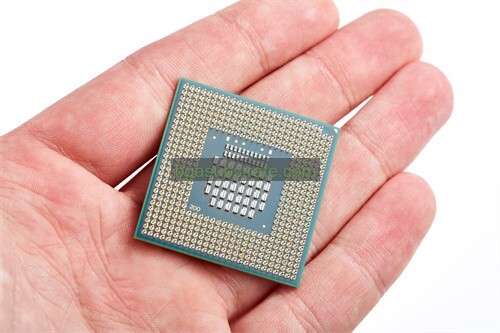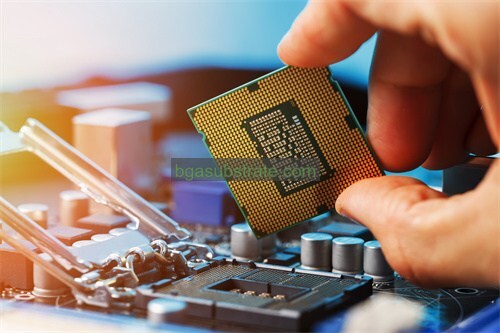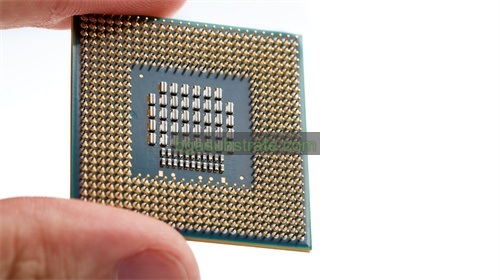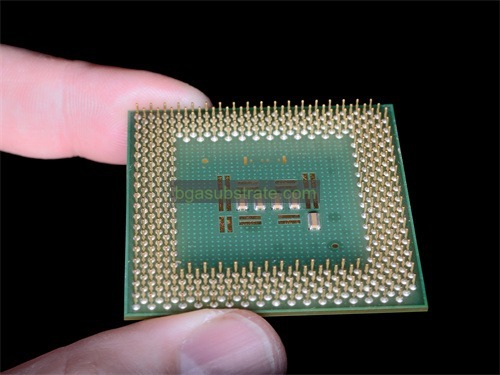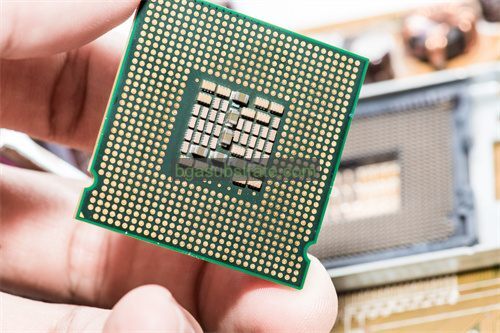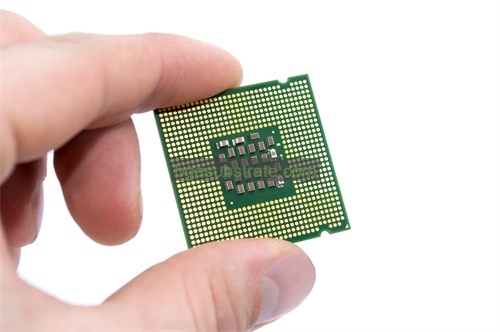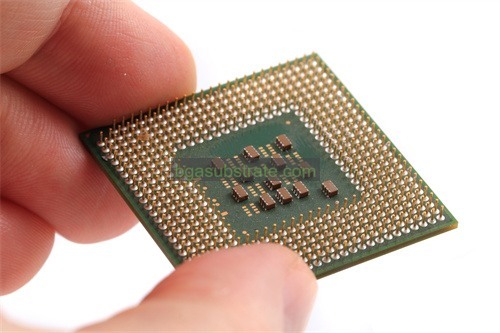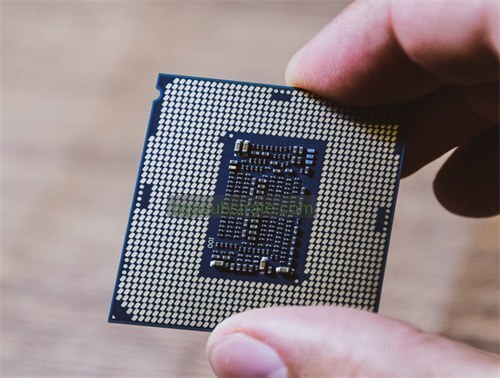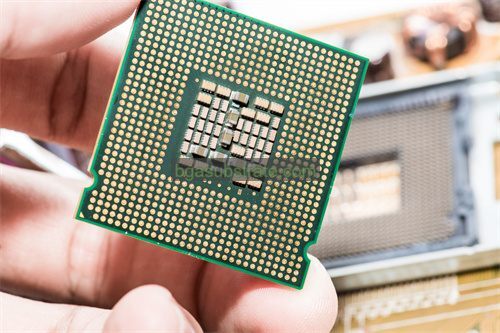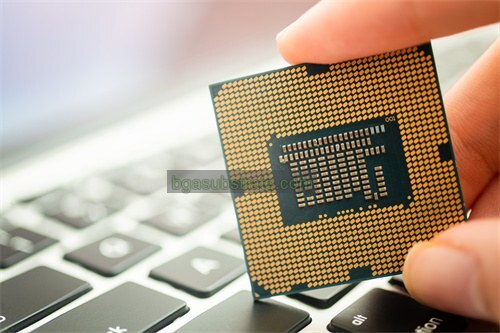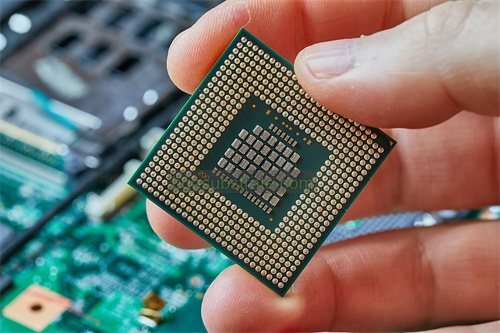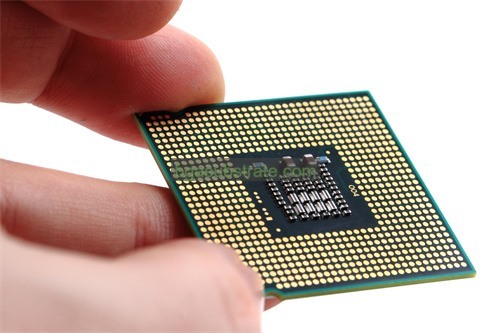Megtron 4 Substrat Hersteller
Megtron 4 Hersteller von Substraten,Megtron 4 Substrate is an advanced material renowned for its exceptional performance in high-frequency and high-speed digital applications. Es zeichnet sich durch eine niedrige Dielektrizitätskonstante und einen niedrigen Verlustfaktor aus, ensuring minimal signal loss and superior signal integrity. Megtron 4 offers excellent thermal conductivity and stability, critical for maintaining reliable operation under demanding conditions. Its robust mechanical properties include high glass transition temperature and low thermal expansion, supporting complex circuit designs and ensuring long-term reliability. Engineers value Megtron 4 Substrate for its ability to meet stringent requirements in telecommunications, Informatik, und Luft- und Raumfahrtindustrie, where high-performance electronic components are essential for cutting-edge applications
Was ist Megtron 4 Substrat?
Megtron 4 substrate is an advanced high-speed, low-loss material used in PCB (Leiterplatte) Herstellung. It is part of the Megtron series developed by Panasonic, known for its high thermal reliability and excellent signal transmission properties. Megtron 4 is specifically engineered to support high-frequency applications where signal integrity is critical, such as in telecommunications, Fahrzeugelektronik, and computing devices.
Hauptmerkmale von Megtron 4 niedrige Dielektrizitätskonstante (εr) und niedriger Verlustfaktor (Df), which contribute to minimal signal loss and high-speed transmission capabilities. These properties make it ideal for applications requiring high-frequency performance, such as RF/microwave circuits and high-speed digital designs. Megtron 4 also exhibits good thermal stability, ensuring reliable performance under varying temperature conditions.
In PCB manufacturing, Megtron 4 substrate materials are used to create boards that can handle complex designs with multiple layers and fine-line geometries. Its compatibility with lead-free assembly processes further enhances its suitability for modern electronic applications, meeting industry standards for reliability and performance.
Insgesamt, Megtron 4 substrate stands out for its combination of high-frequency performance, Thermische Zuverlässigkeit, und Herstellbarkeit, making it a preferred choice for advanced electronic products demanding superior signal integrity and operational stability.
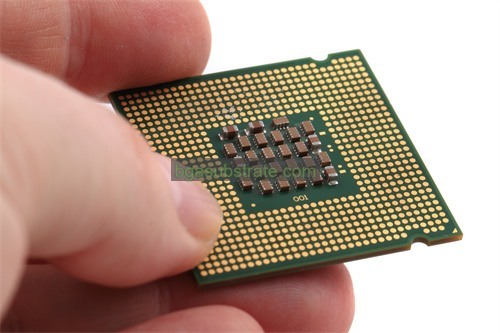
Megtron 4 Hersteller von Substraten
Was ist der Megtron 4 Richtlinien für das Substratdesign?
Die Gestaltungsrichtlinien für Megtron 4 Substrat focus on optimizing its high-frequency performance and ensuring reliable manufacturing. Here are key considerations typically included in Megtron 4 Richtlinien für die Gestaltung von Substraten:
- Materialeigenschaften: Understand and leverage Megtron 4’s specific material properties, such as its low dielectric constant (εr) und niedriger Verlustfaktor (Df), which are critical for minimizing signal loss and ensuring high-speed signal transmission.
- Aufbau von Stapeln: Design the PCB stackup to maximize signal integrity and controlled impedance. This involves placing signal layers close to each other with appropriate dielectric layers in between to maintain consistent impedance throughout the board.
- Trace Geometry: Use controlled impedance trace design to match the characteristic impedance required by high-frequency signals. This includes maintaining specified trace widths, Abstand, and layer transitions to minimize signal reflections and losses.
- Über Design: Optimize via structures, including via types (such as microvias), sizes, and placements to reduce parasitic capacitance and inductance. Via structures should be carefully designed to maintain signal integrity, especially in high-frequency applications.
- Power and Ground Planes: Ensure robust power and ground plane configurations to provide stable power distribution and reduce electromagnetic interference (EMI). Proper plane segmentation and via stitching techniques may be necessary to enhance signal integrity.
- Wärmemanagement: Consider thermal management techniques to handle heat dissipation effectively, ensuring that the PCB operates within safe temperature limits. This is crucial for maintaining electrical performance and reliability over the PCB’s lifespan.
- Design für die Fertigung (DFM): Follow DFM guidelines specific to Megtron 4 substrate manufacturing processes. These guidelines may include rules for minimum feature sizes, copper weight, via aspect ratios, and other parameters to ensure manufacturability without compromising performance.
- Umwelterwägungen: Account for environmental factors such as humidity, Temperaturschwankungen, and mechanical stresses that could affect the PCB’s performance over time. Megtron 4’s thermal reliability helps mitigate some of these concerns but designing for durability is still important.
Durch die Einhaltung dieser Designrichtlinien, engineers can maximize the benefits of Megtron 4 substrate’s advanced material properties, ensuring reliable high-frequency performance and meeting stringent requirements for modern electronic applications.
Die Vorteile von Megtron 4 Substrat
Megtron 4 Substrat offers several distinct advantages that make it highly suitable for advanced electronic applications:
- Hochfrequente Leistung: Megtron 4 substrate is optimized for high-speed signal transmission with its low dielectric constant (εr) und niedriger Verlustfaktor (Df). This allows for minimal signal loss and excellent signal integrity, making it ideal for RF/microwave circuits and high-speed digital designs.
- Thermische Zuverlässigkeit: The substrate exhibits good thermal stability, which is crucial for electronic devices operating in varying temperature environments. This reliability ensures consistent performance and longevity of PCBs using Megtron 4.
- Mechanische Festigkeit: Megtron 4 substrate materials are designed to withstand mechanical stresses and provide enhanced mechanical strength compared to standard FR-4 materials. This makes it suitable for applications where durability and reliability under harsh conditions are required.
- Lead-Free Compatibility: It is compatible with lead-free assembly processes, meeting environmental and regulatory standards while maintaining high-performance characteristics. This compatibility makes it suitable for modern manufacturing practices and environmental initiatives.
- Signalintegrität: With its advanced material properties, Megtron 4 helps maintain signal integrity across complex PCB designs, including fine-line geometries and multiple layers. This capability is essential for ensuring reliable operation of high-frequency and high-speed electronic systems.
- Herstellbarkeit: Megtron 4 substrate materials are designed with manufacturability in mind, supporting efficient PCB fabrication processes. This includes compatibility with standard PCB manufacturing equipment and processes, facilitating ease of integration into production workflows.
- Application Versatility: Aufgrund seiner hohen Leistungseigenschaften, Megtron 4 substrate is used across various industries, einschließlich Telekommunikation, Fahrzeugelektronik, Luft- und Raumfahrt, and computing. It can handle diverse applications ranging from data communication to radar systems, benefiting from its versatility and reliability.
Insgesamt, Megtron 4 substrate stands out for its combination of high-frequency capability, Thermische Zuverlässigkeit, mechanische Festigkeit, und Herstellbarkeit, making it a preferred choice for demanding electronic applications where performance and durability are paramount.
Was ist der Megtron 4 Prozess der Substratherstellung?
Der Herstellungsprozess von Megtron 4 substrate involves several key steps to ensure the material’s high-performance characteristics are preserved and integrated into the PCB manufacturing process. Here are the typical steps involved:
- Materialauswahl: Megtron 4 substrate material is chosen based on its specific properties, einschließlich niedriger Dielektrizitätskonstante (εr), low dissipation factor (Df), and thermal stability. This material selection is critical for achieving high-speed signal transmission and reliability.
- Preparation of Substrate Materials: The raw Megtron 4 material sheets are prepared by cutting them into the required sizes and shapes for PCB manufacturing. This step ensures uniformity and consistency in material properties across the PCB panels.
- Bohrung: Holes for vias and through-holes are drilled into the Megtron 4 substrate panels according to the PCB design specifications. Precision drilling is crucial to maintain tight tolerances and ensure proper alignment of vias for signal integrity.
- Stapeln von Schichten: Multiple Megtron 4 substrate layers, along with other materials like prepreg (dielectric material), copper foils, and adhesive layers, are stacked together according to the PCB stackup design. This layer stacking is done to create the desired number of signal, Macht, und Bodenschichten.
- Kupferplattierung: Copper foils are laminated onto both sides of the Megtron 4 substrate panels through a combination of heat and pressure. This process forms the conductive layers necessary for routing electrical signals throughout the PCB.
- Pattern Imaging: A photoresist layer is applied and exposed to UV light through a photomask that defines the circuit pattern. This pattern defines the traces, Felder, and vias that will conduct electricity across the PCB.
- Radierung: Chemical etching removes excess copper from the substrate, leaving behind the circuit traces defined by the pattern imaging step. Etching is precise and ensures the integrity of signal paths on the PCB.
- Oberflächengüte:Surface finish processes are applied to protect exposed copper traces and pads from oxidation and to facilitate soldering during assembly. Common surface finishes include HASL (Nivellierung von Heißluftlötmitteln), ENIG (Chemisches Nickel-Immersionsgold), und OSP (Organische Lötbarkeitskonservierungsmittel).
- Anwendung der Lötstoppmaske: Eine Lötstoppmaskenschicht wird auf die Leiterplattenoberfläche aufgebracht, Öffnungen lassen (Freiliegende Polster) for soldering components. The solder mask protects the PCB from solder bridges and environmental factors.
- Siebdruck: Identification marks, Konturen der Komponenten, and other text or symbols are printed onto the PCB surface using silkscreen printing. This step helps in component placement and PCB assembly.
- Prüfung und Inspektion: Nach der Fertigung, der Megtron 4 PCBs undergo rigorous testing and inspection processes to ensure they meet design specifications and quality standards. Dazu gehört auch die elektrische Prüfung, dimensional checks, und Sichtprüfung.
- Abschließende Endbearbeitung: PCB panels are routed or scored to separate individual PCBs. Final finishing processes, such as edge plating and deburring, may also be performed to prepare PCBs for assembly.
Indem Sie diese Fertigungsschritte befolgen, manufacturers can leverage the unique properties of Megtron 4 substrate to produce high-performance PCBs suitable for applications requiring high-frequency performance, Thermische Zuverlässigkeit, und mechanische Robustheit.
Die Anwendung von Keramik Megtron 4 Substrat
Megtron 4, despite its name, is not a ceramic substrate; it’s actually an advanced type of high-performance PCB (Leiterplatte) material developed by Panasonic. This material is specifically designed to meet the demanding requirements of high-frequency and high-speed electronic applications. Here are some common applications where Megtron 4 substrate is used:
- Telekommunikation: Megtron 4 substrate is widely used in telecommunications equipment, inklusive Basisstationen, Antennen, and communication modules. Seine niedrige Dielektrizitätskonstante (εr) und niedriger Verlustfaktor (Df) ensure minimal signal loss and excellent signal integrity, crucial for reliable data transmission.
- High-Speed Digital Systems: In digital systems requiring high data transfer rates, such as servers, network switches, and routers, Megtron 4 substrate supports high-speed signal transmission and helps maintain signal integrity across the PCB.
- RF/Microwave Circuits: Due to its superior high-frequency performance, Megtron 4 is ideal for RF (Radiofrequenz) und Mikrowellenanwendungen. It is used in radar systems, Satellitenkommunikation, and other RF devices where precise signal transmission and reception are critical.
- Fahrzeugelektronik: Megtron 4 substrate finds applications in automotive electronics, especially in advanced driver-assistance systems (ADAS), radar sensors, and vehicle communication networks. Its thermal reliability and mechanical strength make it suitable for the harsh operating conditions in automotive environments.
- Luft- und Raumfahrt und Verteidigung: The aerospace and defense industries utilize Megtron 4 substrate in avionics systems, radar equipment, and military communication devices. Its ability to withstand extreme temperatures and mechanical stresses ensures reliable performance in aerospace applications.
- Medizinische Elektronik: In medical equipment and devices, Megtron 4 substrate supports the high-speed processing and transmission of data in diagnostic imaging systems, Geräte zur Patientenüberwachung, und medizinische Instrumente.
- Industrieelektronik: Megtron 4 is used in industrial applications such as control systems, Robotertechnik, and industrial automation where high reliability and performance under challenging environmental conditions are essential.
Zusammenfassend, Megtron 4 substrate is chosen for applications requiring advanced electrical performance, Thermische Stabilität, und mechanische Haltbarkeit. Its versatility and reliability make it a preferred choice across various industries where high-frequency and high-speed electronic systems are deployed.
Häufig gestellte Fragen zur Unterkunft Megtron 4 Substrat
Was ist Megtron 4 Substrat?
Megtron 4 substrate is an advanced type of PCB (Leiterplatte) material developed by Panasonic. It is known for its high-frequency performance, low dielectric constant (εr), und niedriger Verlustfaktor (Df), making it ideal for applications requiring reliable signal transmission.
What are the key advantages of Megtron 4 Substrat?
Megtron 4 substrate offers advantages such as excellent signal integrity, Thermische Zuverlässigkeit, mechanische Festigkeit, and compatibility with lead-free assembly processes. It is suitable for high-speed digital, RF/microwave, selbstfahrend, Luft- und Raumfahrt, and other demanding electronic applications.
Wo ist Megtron 4 substrate used?
Megtron 4 substrate is used in telecommunications equipment, high-speed digital systems, HF-/Mikrowellen-Schaltungen, Fahrzeugelektronik, Anwendungen in der Luft- und Raumfahrt und Verteidigung, Medizinische Elektronik, und Industrieelektronik.
Wie funktioniert Megtron 4 substrate compare to standard PCB materials like FR-4?
Compared to standard PCB materials like FR-4, Megtron 4 offers superior high-frequency performance and lower signal loss. It also provides better thermal stability and mechanical strength, making it suitable for more demanding applications.
What are the manufacturing considerations for Megtron 4 Substrat?
Manufacturing Megtron 4 substrate involves processes such as material selection, Stapeln von Schichten, precision drilling, Kupferplattierung, Radierung, oberflächenveredelung, und Tests. These processes ensure the material’s properties are preserved for optimal PCB performance.
Ist Megtron 4 Substrat umweltfreundlich?
Megtron 4 substrate is compatible with lead-free assembly processes, meeting environmental and regulatory standards. Its use in electronics manufacturing supports sustainability efforts by reducing environmental impact.
 Name Ihrer Website
Name Ihrer Website


